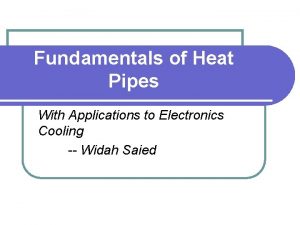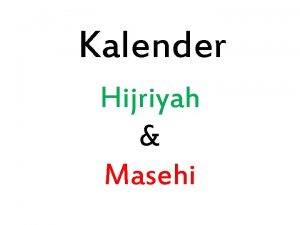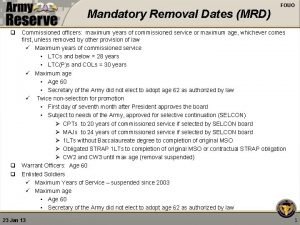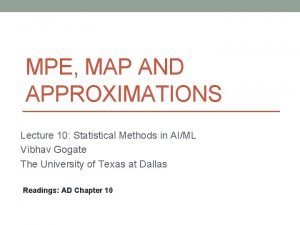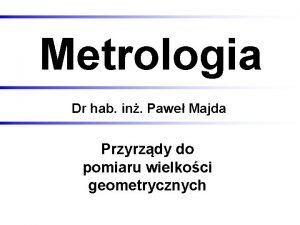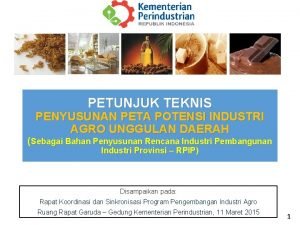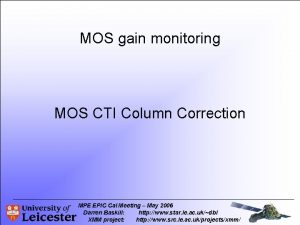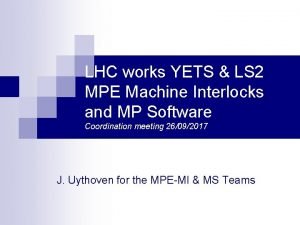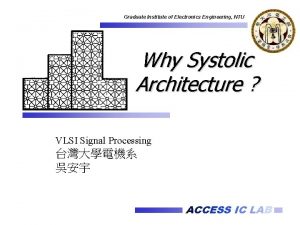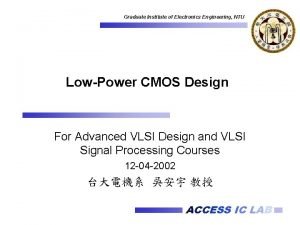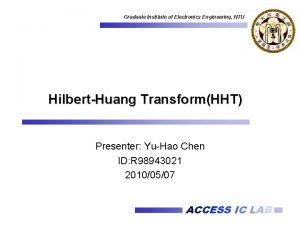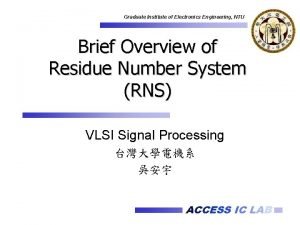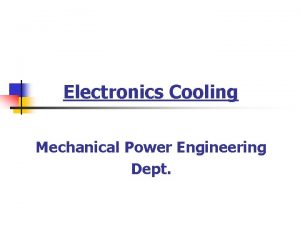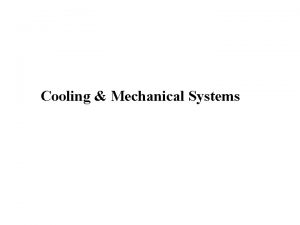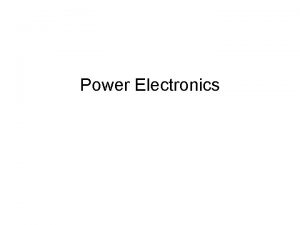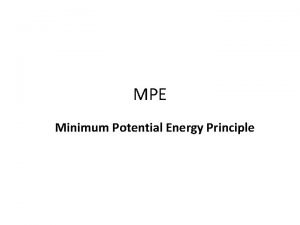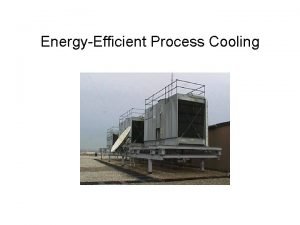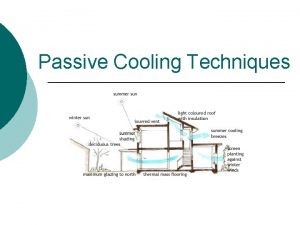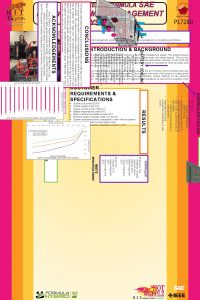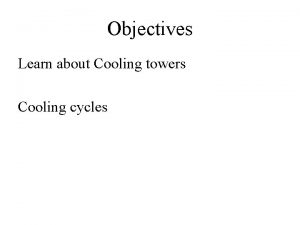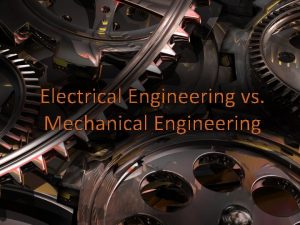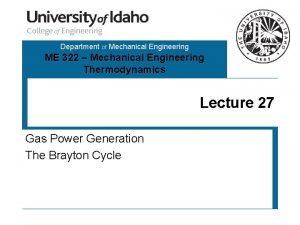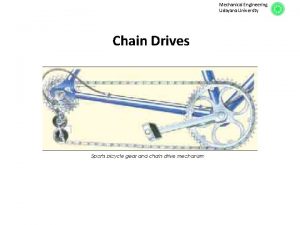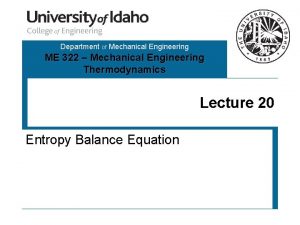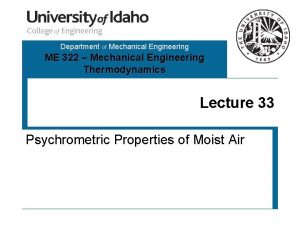Electronics Cooling MPE 635 Mechanical Power Engineering Dept






















- Slides: 22

Electronics Cooling MPE 635 Mechanical Power Engineering Dept.

Course Goals 1. To establish fundamental understanding of heat transfer in electronic equipment. 2. To select a suitable cooling processes for electronic components and systems. 3. To increase the capabilities of post graduate students in design and analysis of cooling of electronic packages. 4. To analysis thermal failure for electronic components and define the solution.

• Part-A • Main topics • Introduction to electronics cooling and thermal packaging • Introduction to basic modes of heat transfer • Conduction heat transfer and extended surfaces in electronic devices • Transient conduction • Natural convection heat transfer (i. e. PCB cooling) • Forced convection heat transfer (Internal and External flow ) • Fan performance • Radiation heat transfer and its applications in electronic devices • Solving the electronics cooling problems with EES software • Electronics cooling problems • Solution of selected electronics cooling problems

3. Basics of Heat Transfer

Modes of heat transfer

Conduction • Conduction heat • Conduction in liquids transfer as diffusion and solids ascribed to of energy due to molecules vibration molecular activity. (solids), translational and rotational (liquids)

Conduction • Fourier’s law

Thermal convection • The heat transfer by convection is described by the Newton's law of cooling:

Thermal convection • convection heat transfer ranges Process h(w/m 2. k) Free convection - gases -25 - liquids 50 -1000 Forced convection - gases 25 -250 - liquids 2

Thermal convection • Example 3. 1: An electric current is passed through a wire 1 mm diameter and 10 cm long. This wire is submerged in liquid water at atmospheric pressure, and the current is increased until the water boils. For this situation h = 5000 W/m 2. o. C. And the water will be 100 o. C. How much electric power must be supplied to the wire to maintain the wire surface at 114 o. C? Schematic: Water Electric wire

Thermal convection • Solution: • The total convection loss from the wire is given by. • For this problem the surface area of the wire is A= π d L = π (1 x 10 3) (10 x 10 2) = 3. 142 x 10 4 m 2 • The heat transfer is therefore • And this is equal to the electric power which must be applied.

Thermal radiation • The mechanism of heat transfer by radiation depends on the transfer of energy between surfaces by electromagnetic waves in the wave length interval between 0. 1 to 100 μm. • Radiation heat transfer can travel in vacuum such as solar energy. • Radiation heat transfer depends on the surface properties such as colors, surface orientation and fourth power of the absolute temperature (T 4) of the surface. • The basic equation for radiation heat transfer between two gray surfaces is given by

Thermal radiation • Example 3. 2. A horizontal steel pipe having a diameter of 10 cm is maintained at a temperature of 60 o. C in a large room where the air and wall temperature at 20 o. C with average heat transfer coefficient 6. 5 W/m 2 K. The emissivity of the steel is 0. 6 calculate the total heat lost from the pipe per unit length.

Thermal radiation • Solution: • The total heat lost from the pipe due to convection and radiation • Because the pipe in a large enclosure then the geometrical factor ƒ = 1

Analogy between Heat Transfer and Electric Circuits • There exists an analogy between the diffusion of heat and electrical charge. Just as an electrical resistance is associated with the conduc tion of electricity, a thermal resistance may be associated with the conduction of heat.

Analogy between Heat Transfer and Electric Circuits

Series Circuits: • By analogy

Parallel Circuit:

Combined Modes of Heat Transfer • Combined Convection and Radiation

Combined Modes of Heat Transfer • Combined Convection and Radiation Now if we define the arithmetic mean temperature as: If further Ts-Te<<Ts then So we may define the radiation heat transfer coefficient as: And finally; Where

Combined Modes of Heat Transfer • Combined Convection and Conduction • This combination is likely to occur with the use of extended surfaces where the primary surface exchanges heat by convection to the adjacent fluid flow and by conduction through the extended surfaces. This case may be considered in a similar manner as the above, but here the problem doesn't need extra work as the conduction thermal resistance is predefined.

Overall Heat Transfer Coefficient Fluid combination U, W/m 2. ºK. Water to water 850 -1700 Water to oil 110 -350 Steam condenser, water in tube 1000 -6000 Ammonia condenser, water in tube 800 -1400 Finned tube heat exchanger, water in tubes air in cross flow 25 -50
 Types of heat pipes
Types of heat pipes Bulan masehi dan hijriah
Bulan masehi dan hijriah Army mrd
Army mrd Fintrac form 630
Fintrac form 630 Ba 635
Ba 635 Current marketing issues
Current marketing issues 635 project
635 project Mpe workload
Mpe workload Mpe vs map
Mpe vs map Paweł majda
Paweł majda Mpe cre review
Mpe cre review Wapeni maskini mvinyo
Wapeni maskini mvinyo Resista vikaliana
Resista vikaliana Mpe
Mpe Mpe
Mpe Mpe gain
Mpe gain Mpe juicer
Mpe juicer Flix.rq
Flix.rq Power triangle diagram
Power triangle diagram Graduate institute of electronics engineering
Graduate institute of electronics engineering Graduate institute of electronics engineering
Graduate institute of electronics engineering Graduate institute of electronics engineering
Graduate institute of electronics engineering Graduate institute of electronics engineering
Graduate institute of electronics engineering
